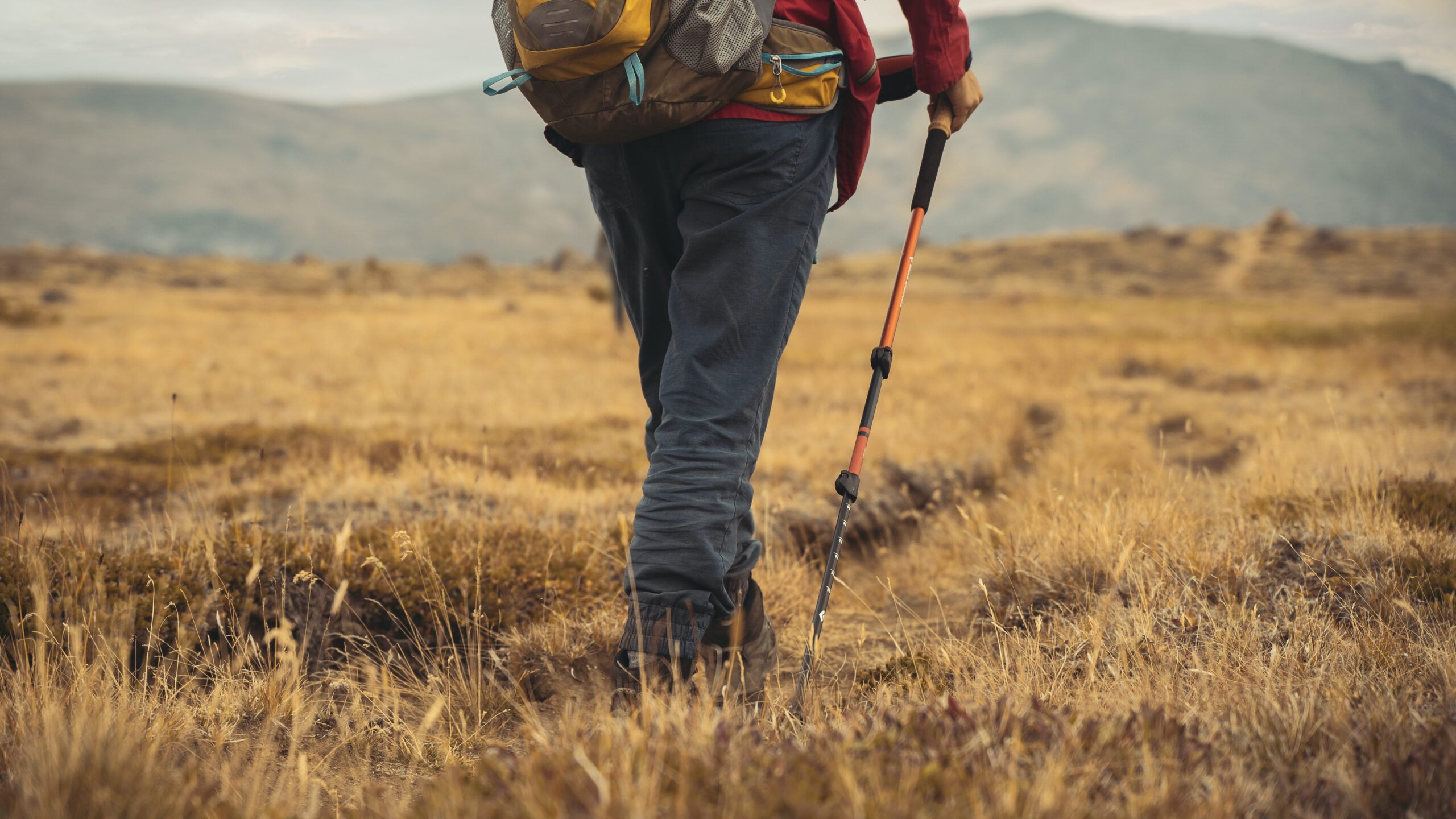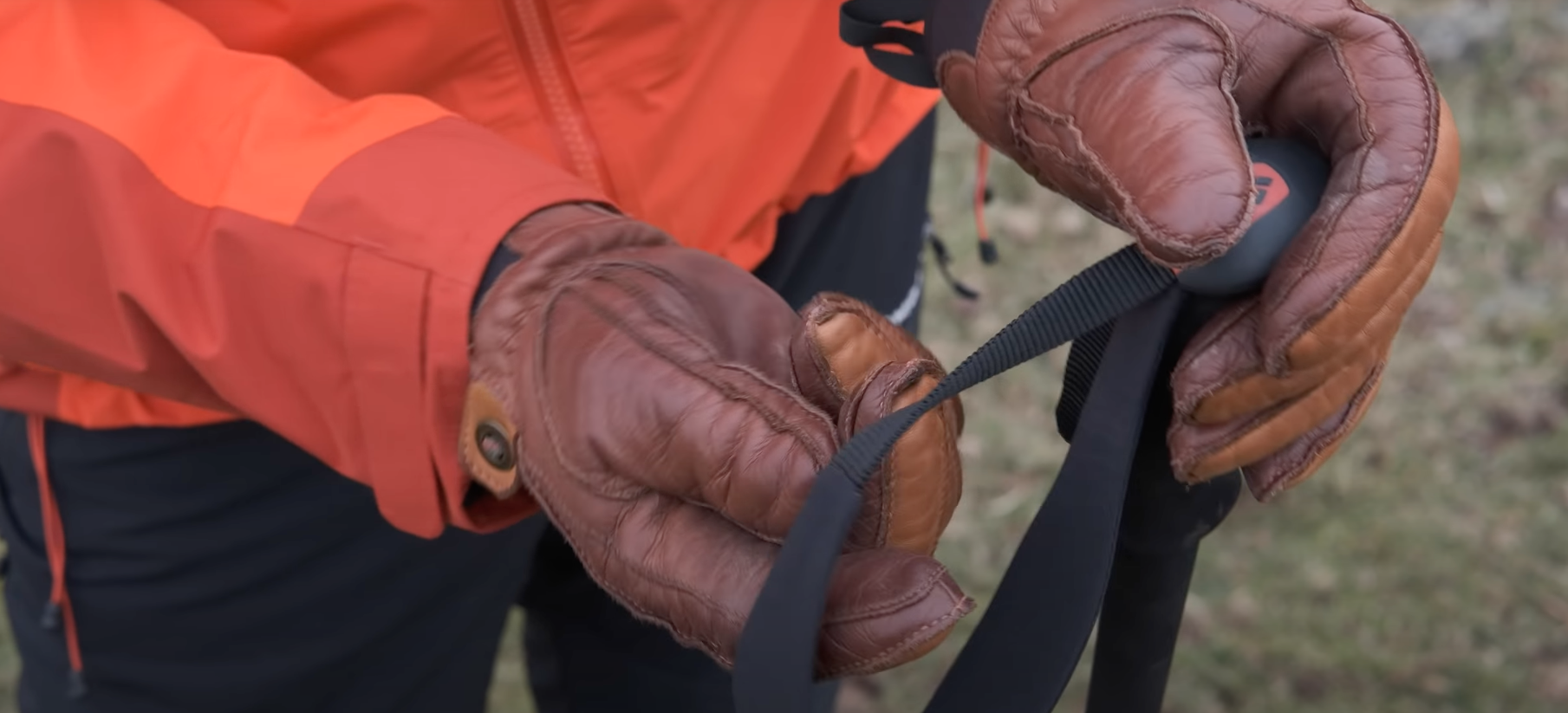The reason why you should use walking poles has become much more popular, and acceptable, in recent years. It will provide huge benefits if they fit you properly and you understand the techniques required.
Here are some useful tips and advice on how to get the most out of your poles so you can enjoy your adventures more, be safer and improve your fitness.
Why You Should Use Walking Poles: A Guide to Benefits
Rather obviously, using a pair of trekking poles is like having another set of feet.
They will provide extra footing on uneven terrain, on river and stream crossings.
They will also support your weight when tackling steep ascents and descents.

Reduced Body Stress
Using a pair of poles dramatically reduces the stress placed on joints, tendons and muscles.
The simple act of pushing down on the poles reduces your body weight.
Try standing on a set of scales with a set of poles held gently in your hands and placed on the floor to see how much lighter you become.
Now imagine that weight reduction from every stride taken on every mile walked and it’s clear how beneficial they can be.
By developing a good technique, your posture will improve, your breathing will be easier and perceived exertion will be reduced.
A good technique is particularly beneficial when carrying a heavy pack.
You will feel fresher at the end of your walk and you’ll ache less the following day.
Why you should use walking poles- Traction and Propulsion
With a pair of poles, it’s like having 4-wheel drive. You have 2 added contact points from which to push off. Nordic walkers and cross-country skiers have developed the technique to push off from their poles providing massive additional propulsion. Walkers can also benefit from that technique and gain an extra “push” to reduce exertion.The “skiing” technique also gives you a full-body workout and increases cardiovascular activity.

Getting the perfect fit: Adjusting Walking Pole Straps
Right, you’re now suitably convinced why you should use walking poles. Now, how do you get started?
It is really important to use the strap and handle correctly.
The strap is not just there to stop you from losing the poles. It’s there to provide an integral link and aid with propulsion.
Slide your hand UP through the loop and then adjust the size so that it is snug, but not too tight.
Relax your grip and open your hand so that the strap lies flat over the back of your hand and then comes together between your thumb and forefinger.
You’ll notice that the strap has a twist built-in which allows it to follow the contour of your hand and lie flat.
If you push down, you should feel the weight being taken across your whole hand.
There is no need to grip the handle tightly when using poles as this can cause tendon strain over time.
Your hand should remain relaxed and let the strap do the work. This method allows you to retain control of the pole and be fully supported by the strap.

Set the Correct Length
There is no exact science about the correct pole length. As you become used to using them, you’ll want to experiment with the length.
But to get you started, stand nice and upright and hold the poles (correctly) with the tips on the floor. Your elbows should now be at an angle of about 90°.
When you adjust the length please ensure that the overall length is divided equally between the sections. Avoid having one section all the way out and one section all the way in. We’d recommend making a note of how long each section is. We’ll cover why later.
Why You Should Use Walking Poles : How to Walk With Poles
Learning the Technique
Walkers can really benefit from a version of the skiing technique used by Nordic walkers and skiers. If you’ve ever seen someone cross country skiing, you’ll be aware of this technique. The simplest way to learn is to find a flat piece of ground large enough to walk comfortably, a football pitch or park is ideal.Getting started
Hold your poles correctly (as described above) and then hang your arms loosely by your sides with the poles angled backward and the tips dragging on the floor behind you. Start to walk normally with your arms by your side and just let the poles drag along the floor.Adding Arm Movement
Now repeat step 2 but allow your arms to swing freely from the shoulder. Try not to think about what the poles are doing. If you become confused and get all tangled up with the poles, just go back to step 2 and start again. As you swing your hands forward and upwards, you’ll notice that the tips of the poles will stay in contact with the ground.Building Momentum
As you swing your hand backwards, you’ll notice the resistance as you push against the pole contact point. Keep practicing until you become comfortable with swinging the pole freely and pushing off backward, through the strap, against the contact point. This provides propulsion and support and as you push backward and downwards, in effect un-weighting yourself.Arm position and Stride
Try to keep your arms soft and relaxed with your hands. Do not rise them higher than the position you’d typically adopt when shaking hands with someone. You may notice that your stride naturally lengthens. This is a good thing, and that the contact point for the pole tip is approximately mid-stride. As you push off against the pole try to use your whole arm, from the shoulder and not from the elbow. Keep practicing and with time this technique will feel totally natural and you’ll wonder how you ever managed to walk without poles. It’s worth noting that this technique works perfectly on flat even ground. It can also be adapted to suit uneven terrain, it just takes practice.
Adapting for Uphill and Downhill Walking
When walking uphill, you may find it beneficial to remove your hands from the straps and grip the pole slightly lower down to compensate for the gradient of the terrain. Conversely, when descending, we’d recommend extending your poles. This will allow you to place the poles in front of you to take some of the stress off your knees and to provide greater stability. We would also recommend removing your hands from the straps when descending — if you happen to take a tumble, you’ll be able to ditch the poles and save yourself.
One Pole or Two
All of the above benefits and techniques will only apply if you use two poles. One pole may be sufficient if you are traveling over easy flat terrain and you are not carrying a pack. When you use two poles you can take advantage of all of the benefits, including the increase in fitness that comes with developing a good technique. This way helps you use your whole body, not just your legs.
Don’t worry, they don’t have to be used all the time
Understandably, you might not want to use your poles for the entirety of your walk. For example, if your route includes a scramble. Most poles can be folded away to a fraction of their original size and stashed on/in your pack. Most technical rucksacks will include some sort of pole storage.
Why You Should Use Walking Poles: Some Other Uses for them…
- Shelter: You can use your trekking poles to set up a tarp for shelter. There are even specific trekking pole tents that are supplied without poles.
- Photography: Turn your pole into a monopod, either with a built-in camera mount on the handle or by using a small tripod strapped onto the handle.
- Path clearing: Tall bracken, spider webs, low hanging branches etc. All can be brushed aside with a sweep of your trekking pole.
- Probe: When crossing streams or rivers, your trekking poles can indicate the strength of flow and depth of water. Similarly, in deep soft snow, or even soft, deep mud!
- Protection: Fend off those mangy farm dogs with a swipe of your trekking pole or deter curious cows/goats/alpaca etc.
- Laundry: Quickly rig up a washing line using your trekking pole and enjoy the luxury of clean socks and dry gloves!
- Chair: Use a trekking pole (shortened) to prop up your rucksack to create a comfy backrest whilst sitting on a sleeping mat.
The case for walking poles adoption
Why You Should Use Walking Poles? Hopefully that’s convinced you that a good set of trekking poles are a worthy investment. If you’ve got any questions, feel free to email us ([email protected]) or contact us on any of our social media channels.
We’ve also made a helpful video with this same information if you’re more of a visual learner. Alternatively, if you’ve got all the info you need already, all of our trekking poles live here.
Did you enjoy reading our blog?
Why not explore others, such as The Benefits of Using Technical Socks

Leave a Reply